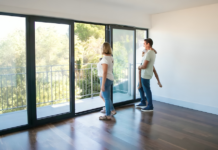If you’ve ever admired the calm elegance, timeless warmth, and quietly luxurious feel of English homes, this guide will give you everything you need to bring that ambience into your own space. Today’s most influential English design trends focus on comfort, function, sustainability, and personal expression. From modern lighting layers to tactile textiles and serene bathroom sanctuaries, here are 17 transformative ideas worth adopting right now. Prepare to explore the most comprehensive breakdown of English home trends you’ll find anywhere.
Introduction
English homes have always been layered with history, subtlety, and charm. They strike a unique balance between heritage and innovation, capturing the spirit of tradition without ever feeling outdated. Over time, the best English interiors have evolved to embrace modern lifestyles while retaining the craftsmanship, cosiness, and calm that make them so universally loved. As people seek more meaningful living environments—spaces that support wellbeing, flexibility, and mental clarity—English design principles have become more relevant than ever.
Across the UK, homeowners are drawn to trends that enrich daily life. Spaces are becoming more personal, more practical, and more emotionally rewarding. This means a shift from superficial décor choices to deeper, more intentional design: natural materials, layered lighting, curated art, multi-functional furniture, and quiet luxury. These 17 life-enhancing trends capture the essence of contemporary English style beautifully. Whether you’re decorating from scratch or refreshing just one room, these ideas will help you build a home that feels warm, harmonious, deeply comfortable, and unmistakably English.
1. Cosy Cottagecore Warmth
Cottagecore isn’t just an aesthetic; it’s a lifestyle approach centred on comfort, softness, and a love of nature. Its appeal stems from its ability to slow down the pace of your home environment, turning each room into a sanctuary. English homes with cottagecore influences feel handmade and heartfelt rather than mass-produced.
Key Elements of Cottagecore
- Floral patterns in gentle, muted tones
- Handmade ceramics and vintage accessories
- Chalky-white furniture and distressed woods
- Soft knitted throws and linen cushions
- Wicker baskets, dried flowers, and botanical prints
Why This Trend Enhances Daily Living
This style offers emotional comfort. Its textures and colours mimic the tranquillity of the countryside, helping reduce stress and encourage slower, more mindful living. It’s especially transformative in bedrooms and living rooms where rest, reading, and relaxation matter most.
2. Earthy Neutral Palettes for Calm Interiors
Earthy neutrals—warm taupes, biscuit tones, soft browns, creamy whites, muted greys—have become the foundation of modern English design. Instead of stark whites or bright hues, these colours bring warmth and balance.
Where Neutrals Work Best
- Open-plan living rooms
- Minimalist kitchens
- Bedrooms requiring serenity
- Home offices designed for focus
How Neutrals Enhance Daily Life
Earthy tones encourage relaxation and mental clarity. They visually quieten a room, making it easier to unwind after a long day. They also pair well with natural materials, supporting a sensory experience that feels grounded and organic.
Easy Ways to Introduce This Trend
- Choose off-white instead of pure white
- Use warm-toned curtains or Roman blinds
- Add textured beige or cream rugs
- Balance darker furniture with lighter walls
3. Layered Lighting for Mood, Function and Warmth
Lighting is the backbone of English homes, creating atmosphere, visual interest, and practical support for daily routines. Instead of relying on one central light, English interiors use layers to enhance depth and softness.
The Three Essential Lighting Layers
| Lighting Type | Purpose | Emotional Impact |
|---|---|---|
| Ambient | General room illumination | Creates a relaxed, welcoming atmosphere |
| Task | Focused lighting for activities | Improves productivity and visibility |
| Accent | Highlights décor, art, or architecture | Adds drama and personality |
How Layering Elevates a Home
Layering offers flexibility. You can shift a room from energising to calming simply by adjusting your lights. For example, soft lamps can enhance evening relaxation, while task lights support reading, writing, and cooking. The effect transforms both mood and function instantly.
4. Sustainable and Eco-Friendly Materials
Environmental consciousness is a defining characteristic of contemporary English design. People are adopting materials that are gentle on the earth and healthier for daily living. Sustainability is no longer a trend but a norm shaping furniture choices, linens, flooring and accessories.
Popular Eco-Friendly Options
- Reclaimed oak, pine, or elm flooring
- Bamboo kitchen accessories or storage
- Organic cotton, jute, hemp, or wool textiles
- Natural clay or terracotta tiles
- Non-toxic paints with low volatile organic compounds
Why Sustainability Enhances Living
Eco-friendly materials breathe better, last longer, and often age beautifully. They also create spaces that feel more natural and calming due to their tactile, earthy qualities. Sustainable choices also reduce long-term waste and lower maintenance costs, making them practical as well as ethical.
5. Textured Wall Panelling for Character and Warmth
Wall panelling is one of the most transformative English home trends. Once associated with period properties, it is now used in all styles—from modern apartments to countryside cottages.
Types of Panelling Worth Considering
- Shaker Panelling: Clean lines, perfect for contemporary spaces
- Tongue-and-Groove: Ideal for bathrooms and hallways
- Half-Height Panelling: Balanced elegance, great addition for small rooms
- Full-Height Panelling: Dramatic and luxurious
Why Panelling Enhances Homes
It adds instant architectural interest, making plain rooms feel designed and intentional. Panelling also improves acoustic comfort by reducing echo and adds insulation in colder areas. Paint it soft sage, navy blue, cream or muted green for quintessential English charm.
6. Multi-Functional Furniture for Modern Living
As homes adapt to hybrid working, smaller urban spaces, and more flexible lifestyles, multi-functional furniture has become essential.
Functional Furniture Ideas
- Storage ottomans that hide blankets and books
- Extendable dining tables for guests
- Sofa beds for small flats or guest rooms
- Folding desks for flexible workstations
- Nesting side tables
How This Trend Enhances Life
Multi-use pieces reduce clutter and maximise every square foot. This makes homes feel larger, more balanced, and easier to maintain. They also support adaptability—for example, turning a spare room into both a study and a guest room.
7. Biophilic Design and Indoor Greenery
Biophilic design emphasises the connection between indoors and nature. English homes embrace greenery not just for aesthetics but for wellbeing.
Ways to Incorporate Biophilia
- Large indoor plants such as fiddle leaf figs or olives
- Potted herbs on kitchen windowsills
- Vertical gardens on small balconies
- Natural materials like stone, clay, wood and linen
- Light-enhancing mirrors to mimic the brightness of outdoors
Wellness Benefits
Plants purify air, reduce stress, and create a sense of tranquillity. They also introduce organic shapes and natural movement, adding life and dynamism to a room.
8. Heritage Patterns with Modern Interpretations
English homes honour tradition through pattern—tartan, toile, damask, and botanical prints—but modern homeowners are merging them with contemporary décor.
How to Use Heritage Patterns
- Traditional wallpaper paired with minimalist furniture
- Patterned cushions on sleek sofas
- Victorian floor tiles in modern bathrooms
- Tartan throws in neutral bedrooms
Why This Trend Works
It celebrates history while keeping design current. Heritage patterns bring storytelling and texture, adding depth that modern minimalism sometimes lacks. They also allow homeowners to personalise spaces with cultural and familial references.
9. Spa-Inspired Bathrooms for Everyday Escape
Bathrooms have moved beyond purely functional spaces. Inspired by spa environments, modern English bathrooms emphasise serenity, natural textures, and softness.
Spa Elements to Include
- Rainfall shower heads
- Pebble, marble, or stone tiles
- Wooden bath trays and stools
- Soft ambient lighting
- Plush towels and bathrobes
- Subtle scents like lavender or eucalyptus
How This Enhances Living
A spa-inspired bathroom encourages relaxation and slows down your evening routine. It creates a daily moment of escape—important for wellbeing, sleep quality, and stress reduction.
10. Open-Plan Living with Smart Zoning
Open-plan living remains a favourite, but zoning is now essential for modern English homes. Rather than feeling like one large room, open-plan spaces are subtly divided into sections.
Ways to Zone Open Spaces
- Rugs to define lounge seating
- Hanging lights over dining areas
- Bookcases used as room dividers
- Colour changes to mark transitions
- Sofas used as soft barriers
Benefits of Zoning
Zoning supports multi-functional living: working, resting, dining and hosting. It adds visual clarity and improves flow, making large spaces feel both open and purposeful.
11. Statement Ceilings with Personality
Previously overlooked, ceilings are becoming a focal point in English homes. Whether painted, panelled, or wallpapered, statement ceilings add drama and completeness to a design.
Ceiling Ideas
- Dark painted ceilings for depth
- Wood-clad ceilings for warmth
- Decorative plaster roses and cornices
- Wallpapered ceilings for added texture
Why This Trend Enhances Homes
It draws the eye upward, creating a feeling of height and spaciousness. It also adds personality and artistic flair, turning an underused surface into a design opportunity.
12. Smart Home Comforts with Seamless Integration
Smart home technology is no longer futuristic—it’s standard in many English homes. The goal is subtle integration rather than flashy tech displays.
Common Smart Upgrades
- Heated floors
- Automated blinds
- Voice-activated lighting
- Wi-Fi enabled thermostats
- Smart plugs and security systems
Why Smart Comfort Matters
These upgrades save energy, increase security, and simplify daily routines. They enhance convenience without compromising traditional English aesthetic values.
13. Home Libraries and Reading Corners
England has a rich literary heritage, and many homeowners are honouring that tradition by creating reading spaces or full home libraries.
How to Build a Reading Nook
- Add wall-mounted shelves or a classic bookcase
- Use warm lighting like soft lamps or sconces
- Add textured seating—a linen armchair or velvet sofa
- Incorporate throws, footstools, and side tables
Why Reading Corners Matter
Reading nooks create restful moments in your day. They support relaxation, focus, and mental wellbeing. They also offer a charming and cosy visual element in any home.
14. Art-Led Interior Design
More English homeowners are beginning their interior schemes with a piece of art. This approach brings clarity, coordination, and emotion to décor choices.
How to Use Art as a Starting Point
- Select a large piece that sets the tone
- Build your colour palette around the artwork
- Combine old and new art for layered character
- Use art to guide texture and material decisions
Why This Trend Enhances Living
Art adds individuality, meaning, and energy. It allows homes to feel curated and intentional rather than generic or trend-led.
15. Handmade and Artisan Touches
Artisanal décor reconnects homes with craftsmanship and authenticity. English interiors increasingly feature handmade pieces that tell a story.
Examples of Artisan Touches
- Hand-thrown pottery
- Carved wood sculptures
- Woven wall hangings
- Hand-knotted rugs
- Macramé plant holders
Why People Love This Trend
Artisan décor adds soul, uniqueness, and warmth. These items carry personality and depth, unlike factory-produced pieces. They also support local craftspeople and sustainable design choices.
16. Outdoor Rooms and Garden Retreats
Outdoor living is especially important in English homes where gardens, balconies, and patios serve as extensions of the interior.
Ideas for Creating Outdoor Rooms
- Weatherproof seating arrangements
- Pergolas draped with climbing plants
- Lanterns and solar lights
- Fire pits for colder evenings
- Outdoor rugs and textiles
- Small water features
Why This Trend Enhances Life
Outdoor rooms encourage you to spend more time in fresh air. They enhance entertaining, relaxation, and wellbeing, turning even small gardens into year-round havens.
17. Quiet Luxury for Timeless Elegance
Quiet luxury is about quality, not ostentation. It prioritises refined materials and subtle sophistication.
Key Characteristics of Quiet Luxury
- Natural stone or real wood
- High-quality linens and wool fabrics
- Minimalist yet warm colour palettes
- Understated décor with clean lines
- Curated décor rather than clutter
Why This Trend Is Transformational
Quiet luxury brings calm, harmony, and enduring beauty. Everything feels considered but effortless. Homes designed this way age gracefully and adapt elegantly to future trends.
FAQs
1. What makes English home design unique?
English home design stands out for its refined balance of heritage and modernity. It blends classic craftsmanship—such as panelling, textured fabrics and soft lighting—with contemporary functionality. Its emphasis on comfort, natural materials, and understated elegance creates interiors that feel both timeless and deeply personal. English homes prioritise lived-in warmth rather than showroom perfection, making them inviting, practical, and emotionally grounding.
2. How can I make my home feel more English-inspired?
Focus on creating warmth, depth, and subtle character. Choose neutral palettes with earthy tones, incorporate layered lighting, and use natural materials like oak, wool, or linen. Add greenery, display meaningful art, include textures through soft furnishings, and mix old with new for visual interest. English-inspired homes also favour comfortable seating, curated décor, and well-defined cosy corners that encourage relaxation and conversation.
3. What trends work best for small English homes or flats?
Smaller homes benefit from multi-functional furniture, zoning techniques, layered lighting, and neutral colour palettes. Items like storage ottomans and fold-away desks save space while improving functionality. Mirrors and reflective surfaces help brighten compact rooms. Biophilic design brings freshness and life even to small flats. Smart storage solutions and subtle décor help maximise space without overwhelming it, keeping the home airy and comfortable.
4. Are these English home trends budget-friendly?
Many of the trends can be incorporated without major investment. Adding plants, updating throws and cushions, repainting walls, introducing lamps, or using second-hand furniture are all affordable ways to refresh a space. Sustainability also encourages reusing and repurposing pieces. Even trends like quiet luxury can be applied by choosing one or two high-quality items rather than completely refurbishing a room.
5. Why are natural materials so popular in English homes?
Natural materials provide warmth, texture, and emotional comfort. Wood, stone, wool, and clay age beautifully and bring organic patterns into interiors. They are durable, sustainable, and healthier for indoor environments compared to synthetic alternatives. Natural textures support calm, grounding atmospheres, making them ideal for modern lifestyles where people seek balance, restoration, and a closer connection to nature.
Conclusion
English home trends continue to evolve in a way that supports lifestyle needs while celebrating heritage, craftsmanship, and comfort. These 17 life-enhancing ideas show how deeply the English approach to interiors focuses on emotional wellbeing, sustainability, subtle luxury, and purposeful design. Every trend offers a way to create a home that feels intentional, soothing, and genuinely enjoyable to live in.
By adopting even a few of these concepts—layered lighting, artisan touches, biophilic design, spa-inspired bathrooms, or quiet luxury—you can transform your living environment into something richer, more harmonious, and more inspiring. Ultimately, the best English homes are not about perfection but about thoughtful choices that help your everyday life feel calmer, warmer, and more fulfilled.

























